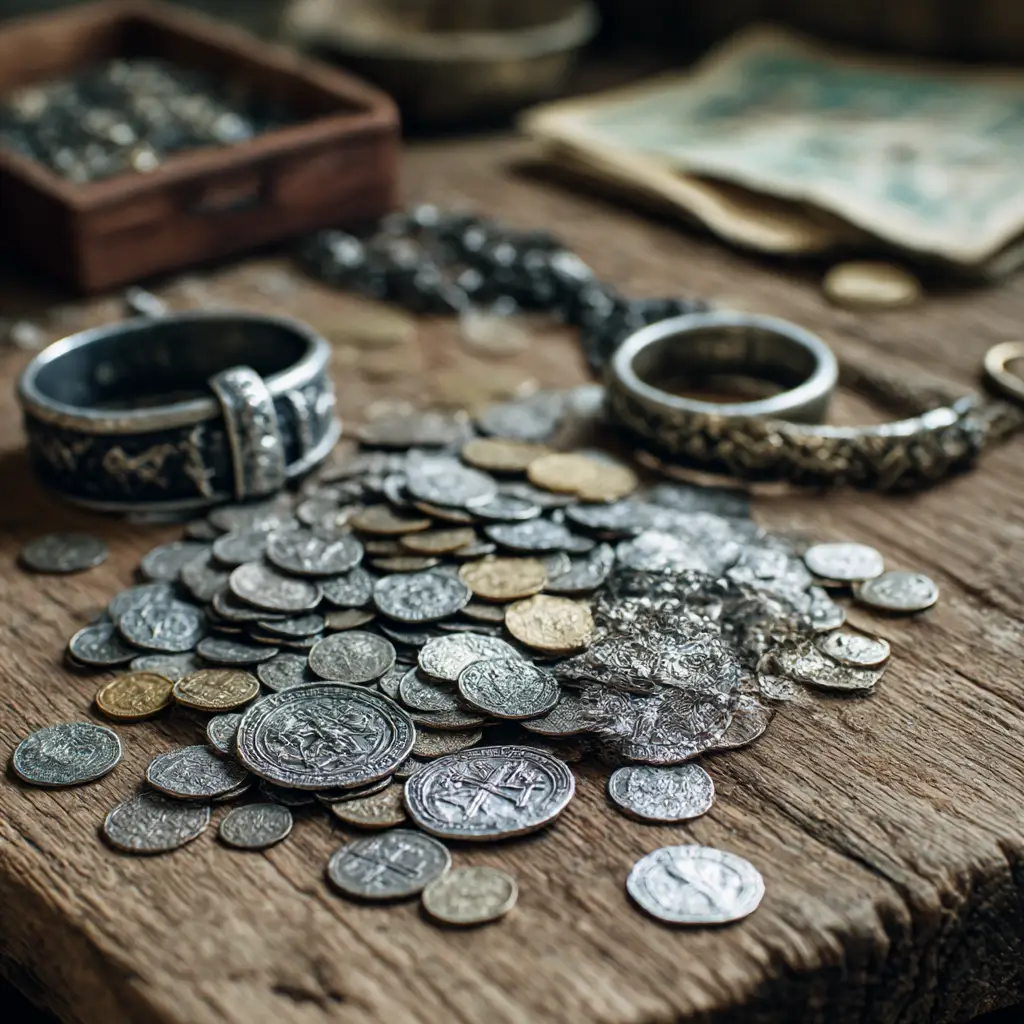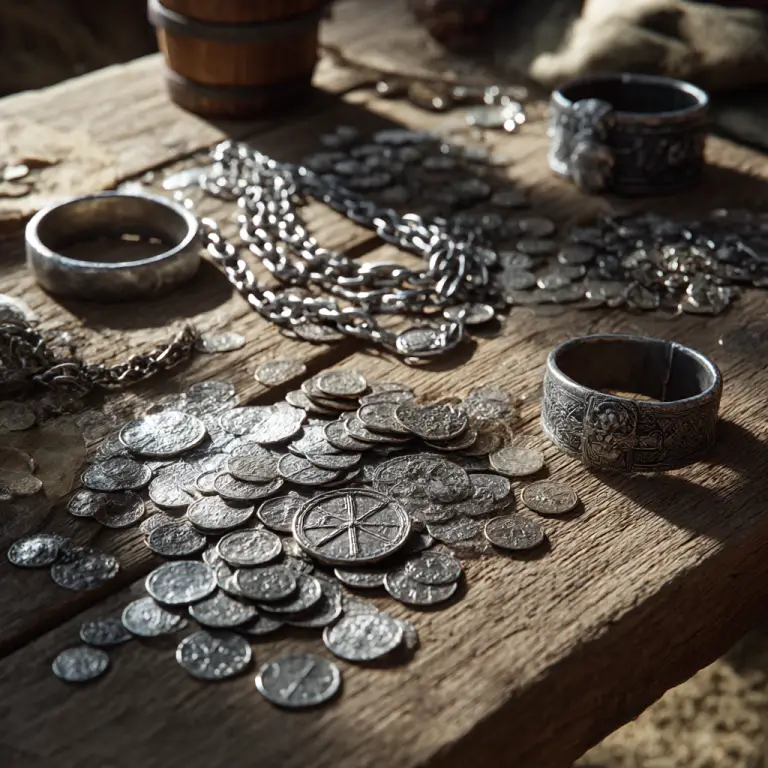Viking Currency – Trade and Wealth in the Viking Age
During the Viking Age, currency was not limited to minted coins. Wealth and trade operated through a combination of bullion, barter, and eventually coinage as Vikings expanded their reach and influence across Europe and beyond. Their approach to currency was both practical and adaptive, reflecting their roles as traders, raiders, and settlers.
Silver as the Basis of Viking Wealth
Silver was the primary medium of exchange for the Vikings. They valued silver by weight rather than by coin denomination. Items such as ingots, arm rings, and even broken bits of jewellery—known as hacksilver—were used in transactions. These could be cut or shaped to the required weight, making silver a flexible form of currency.
Hacksilver and Weighing Scales
Hacksilver played a central role in trade. It allowed for precise exchanges without the need for formal coinage. Viking traders often carried small scales and sets of weights, typically made of lead or bronze, which allowed them to weigh silver during transactions. Archaeological finds across Scandinavia and Viking trading centres frequently include such scales, confirming their widespread use.
Coinage and Foreign Influence
While the early Viking economy was largely based on silver bullion, foreign coins began to circulate as the Vikings came into contact with other cultures. Islamic dirhams, Anglo-Saxon pennies, and Carolingian deniers have all been found in Viking hoards. These coins were usually valued for their silver content rather than their face value or origin. Over time, Viking rulers began minting their own coins, such as the silver pennies produced under King Cnut and later Scandinavian monarchs, reflecting a shift towards a more formal monetary economy.
Barter and Trade Goods
Alongside silver, barter remained important, especially in more isolated or rural communities. Goods such as furs, textiles, weapons, amber, and slaves were commonly exchanged. This form of trade suited the Viking lifestyle and complemented the bullion economy.
Wealth and Social Status
Currency and trade were also tied to social status. Wealth in the form of silver and luxury goods was used to demonstrate power and to maintain loyalty through gift-giving and feasting. Accumulated silver hoards, often buried for safekeeping or as offerings to the gods, have provided valuable insights into Viking economy and society.
Viking Trade Networks
Viking trade routes stretched from the North Atlantic to the Caspian Sea. Their control of waterways and strategic settlements allowed them to access markets in the Islamic world, Byzantium, and Western Europe. These long-distance connections brought not only wealth but also exposure to new economic systems and technologies, influencing their own use of currency.
Legacy of Viking Currency
The Viking approach to money reveals a culture that blended practicality with adaptability. Their use of silver by weight, gradual adoption of coinage, and vast trade networks laid the foundation for the economic systems that followed in medieval Scandinavia. Today, Viking hoards and artefacts continue to shed light on a dynamic and interconnected economic world.



